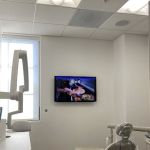How to Prevent Gum Disease from Progressing
- 1. Understanding Gum Disease
- 2. The Stages of Gum Disease
- 3. Recognizing the Symptoms of Gum Disease
- 4. How to Prevent Gum Disease from Progressing
- 5. Real-Life Story: Overcoming Gum Disease
- 6. Why Choose Dentistry Toothtruth for Your Gum Health
1. Understanding Gum Disease
Gum disease, also known as periodontal disease, is a common but serious condition that affects the tissues surrounding and supporting your teeth. It is caused by bacterial infections that lead to inflammation, bleeding, and damage to the gums. If left untreated, gum disease can lead to tooth loss and contribute to other health problems such as heart disease and diabetes. Early detection and treatment are key to preventing gum disease from progressing.
The primary cause of gum disease is poor oral hygiene, which allows plaque and tartar to build up on the teeth and gums. This buildup harbors bacteria that irritate and inflame the gums. While gum disease is common, it is preventable with good dental habits, regular checkups, and professional cleanings. Understanding how gum disease develops and how to care for your gums can go a long way in maintaining a healthy smile.
2. The Stages of Gum Disease
Gum disease typically develops in stages, starting with gingivitis and potentially advancing to more severe forms. Understanding these stages can help you identify the disease early and take action to prevent it from worsening.
- Gingivitis: Gingivitis is the earliest stage of gum disease. It is characterized by red, swollen gums that may bleed when brushing or flossing. At this stage, gum disease is often reversible with improved oral hygiene, including regular brushing, flossing, and professional cleanings.
- Periodontitis: If gingivitis is left untreated, it can progress to periodontitis. At this stage, the infection spreads deeper into the tissues, causing the gums to pull away from the teeth and form pockets of infection. This can result in tooth mobility and bone loss, requiring more intensive treatment.
- Advanced Periodontitis: In advanced periodontitis, the damage to the gums, ligaments, and bone becomes more severe. Teeth may become loose and may even need to be extracted. This stage requires urgent intervention from a dentist or periodontist to prevent further damage.
The good news is that with early intervention, gum disease can often be reversed, or at least its progression can be slowed. The key is catching it early and following a good oral care routine.
3. Recognizing the Symptoms of Gum Disease
The symptoms of gum disease can range from mild to severe, and they can often go unnoticed until the disease has advanced. Recognizing the signs early is essential in preventing the condition from worsening. Common symptoms include:
- Red or Swollen Gums: Healthy gums are typically pink and firm. If your gums are red, swollen, or puffy, it may be a sign of gingivitis or early gum disease.
- Bleeding Gums: Bleeding when brushing or flossing is one of the most common signs of gum disease. If this happens regularly, it is important to visit a dentist for an evaluation.
- Bad Breath: Persistent bad breath, also known as halitosis, can be a result of bacteria in the mouth and gums. It is often an early sign of gum disease.
- Receding Gums: As gum disease progresses, the gums may begin to pull away from the teeth, exposing more of the tooth surface. This can make your teeth appear longer and may increase sensitivity.
- Loose Teeth: In more advanced stages of gum disease, teeth may become loose or shift in position due to the destruction of the supporting bone and tissues.
If you experience any of these symptoms, it is important to schedule a visit with your dentist to determine the severity of the issue and receive appropriate treatment.
4. How to Prevent Gum Disease from Progressing
Prevention is key to keeping your gums healthy and preventing gum disease from progressing. The good news is that you can take several steps to maintain healthy gums and avoid the progression of gum disease:
- Brush Your Teeth Twice a Day: Brushing your teeth with fluoride toothpaste at least twice a day helps remove plaque and food particles. Make sure to brush along the gumline to prevent plaque buildup.
- Floss Daily: Flossing removes plaque and food particles between your teeth and under the gumline, areas your toothbrush may not reach. It is essential for preventing gum disease.
- Use Mouthwash: An antimicrobial mouthwash can help reduce bacteria in the mouth, further preventing plaque buildup and gum inflammation.
- Regular Dental Checkups: Regular visits to your dentist are crucial for catching gum disease early. Your dentist can perform professional cleanings to remove tartar and plaque that can’t be removed by brushing alone.
- Quit Smoking: Smoking is a major risk factor for gum disease. If you smoke, quitting can significantly improve your gum health.
- Eat a Healthy Diet: A balanced diet rich in vitamins and minerals, particularly vitamin C, can help keep your gums healthy and prevent gum disease.
By following these steps, you can significantly reduce your risk of developing gum disease and help keep your gums healthy for years to come.
5. Real-Life Story: Overcoming Gum Disease
Sarah, a 38-year-old mother of two, noticed that her gums were bleeding every time she brushed her teeth. Initially, she thought it was just a minor issue, but when the bleeding persisted for weeks, she decided to visit her dentist. After an examination, Sarah was diagnosed with early-stage gum disease.
With her dentist's guidance, Sarah made several changes to her oral hygiene routine, including brushing more effectively, flossing regularly, and using an antimicrobial mouthwash. Within a few months, the bleeding stopped, and her gums began to heal. Sarah’s story highlights the importance of early detection and how small lifestyle changes can prevent the progression of gum disease.
6. Why Choose Dentistry Toothtruth for Your Gum Health
If you’re looking for expert care to prevent gum disease from progressing, Dentistry Toothtruth offers personalized services to ensure your gums stay healthy. Our experienced team provides comprehensive dental care, including routine checkups, professional cleanings, and tailored advice on gum disease prevention.
Visit Dentistry Toothtruth today to learn more about how we can help you maintain healthy gums and prevent gum disease from progressing.







 Dr. Alexander Portnoy DMD4.0 (14 review)
Dr. Alexander Portnoy DMD4.0 (14 review) Growing Smiles of Englewood5.0 (213 review)
Growing Smiles of Englewood5.0 (213 review) Oswego Commons Family Dental4.0 (972 review)
Oswego Commons Family Dental4.0 (972 review) Dr. Tania H. Saavedra, DDS5.0 (19 review)
Dr. Tania H. Saavedra, DDS5.0 (19 review) smile. | 4S Ranch5.0 (48 review)
smile. | 4S Ranch5.0 (48 review) National Dental Williston Park4.0 (287 review)
National Dental Williston Park4.0 (287 review) The Importance of Oral Health Education During Pregnancy for a Healthy Pregnancy
The Importance of Oral Health Education During Pregnancy for a Healthy Pregnancy Best Tips for Brushing Your Teeth Properly for Healthy Gums: Essential Techniques for Oral Health
Best Tips for Brushing Your Teeth Properly for Healthy Gums: Essential Techniques for Oral Health Why Skipping Dental Checkups Can Lead to Bigger Oral Health Problems
Why Skipping Dental Checkups Can Lead to Bigger Oral Health Problems Advantages of Porcelain Dental Restorations
Advantages of Porcelain Dental Restorations How Can Diabetes Cause Tooth and Gum Problems? Preventing and Managing Oral Health Issues
How Can Diabetes Cause Tooth and Gum Problems? Preventing and Managing Oral Health Issues Healthy Habits for Promoting Good Oral Health and Hygiene: Tips for a Healthy Smile
Healthy Habits for Promoting Good Oral Health and Hygiene: Tips for a Healthy Smile